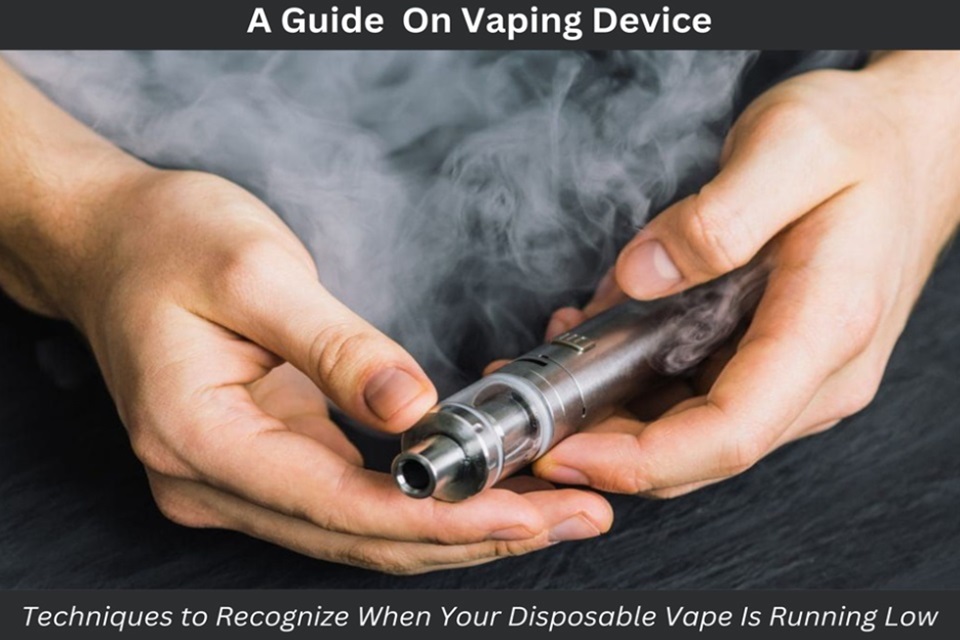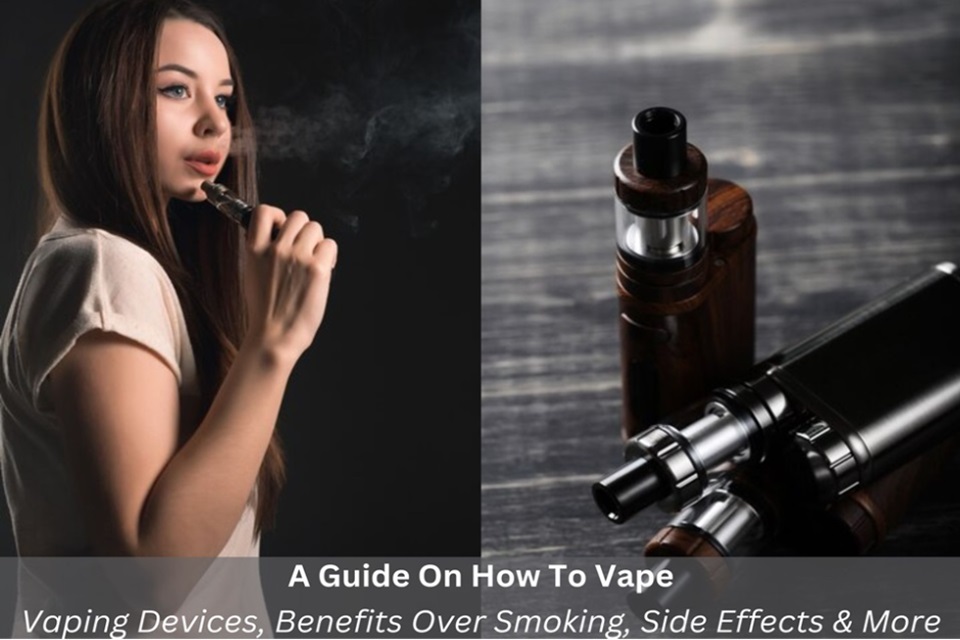A Guide On How To Know When Your Disposable Vape Is Almost Empty
Disposable vapes are becoming popular because they are easy to use and convenient. They are a top choice for both new and experienced vapers. Unlike traditional vapes, disposables don’t need to be refilled or maintained, which is a big plus. However, it can be challenging to know when your device is almost empty. Running out of e-liquid unexpectedly can be frustrating, especially if you use your vape throughout the day. This guide will help you recognize the signals that may tell your disposable vape is running out and give you tips on what to do next.
Vaping: An Overview
Vaping involves inhaling the vapor created by an electronic device, commonly referred to as an e-cigarette or vape. Rather than burning tobacco like conventional cigarettes, vaping devices heat a liquid (known as e-liquid or vape juice) containing nicotine, flavorings, and other chemicals, producing a vapor for users to inhale.
What Is A Vaping Device?
A vaping device, also known as a vape or e-cigarette, is an electronic gadget designed to produce vapor for inhalation. Here are the basic components:
- Battery: Powers the device.
- Tank or Cartridge: Holds the e-liquid.
- Coil: Heats the e-liquid to produce vapor.
- Mouthpiece: Where you inhale the vapor.
Vaping devices come in various shapes and sizes, from simple disposable e-cigarettes to more complex refillable vapes. They are generally easy to use and portable, making them a popular choice for those looking to switch from traditional smoking.
Working Method Of Vape Device
- Activation: When you inhale or press a button (depending on the device), the battery activates the coil.
- Heating: The coil heats up, which in turn heats the e-liquid absorbed by the wick.
- Vaporization: The heated e-liquid turns into vapor.
- Inhalation: You inhale the vapor through the mouthpiece.
- Sensors: Some devices have sensors that automatically activate the heating process when you inhale.
- Adjustable Settings: Advanced vapes allow you to adjust power, temperature, and airflow for a customized experience.
How To Identify Your Disposable Vape Is Almost Empty: Comprehensive Guide With Tips
Reduced Vapor Output
When the disposable vape is about to end, you’ll likely notice a decrease in vapor production, as the device struggles to produce the same amount of vapor as when it was full. This can result in smaller, less dense clouds, and you may need to take longer or more frequent puffs to achieve the same effect. If you observe a significant drop in vapor output, it’s a clear sign that your vape is running out of juice.
Tips:
- Take slower, longer puffs to see if the vapor production improves temporarily.
- Keep a spare disposable vape on hand to avoid interruptions in your vaping experience.
Weaker Flavor
When a disposable vape device is about to finish on e-liquid, you might notice the flavor changes a bit, indicating that it’s almost empty. The flavor may become less intense and satisfying as the e-liquid depletes. You may observe a muted taste or an unusual, slightly burnt flavor, suggesting that the coil isn’t adequately saturated with e-liquid. This could occur because there isn’t enough e-liquid remaining to fully soak the wick inside the vape.
Tips:
- Try tilting the vape slightly to help the remaining e-liquid reach the coil.
- If the flavor doesn’t improve, it’s time to replace your disposable vape.
Difficult Draw
A challenging or tough pull is another sign that the disposable vape is about to finish on e-liquid. Insufficient e-liquid can disrupt the airflow, making it more difficult to inhale. You may experience increased draw resistance or observe that the device is not activating as effortlessly as before. This change can be especially noticeable if you are accustomed to a smooth, effortless draw from your vape.
Tips:
- Gently tap the device to dislodge any air bubbles that might be blocking the airflow.
- Avoid drawing too hard, as this can cause damage to the coil and further degrade the vaping experience.
LED Light Indicators
Disposable vapes often have an LED light that gives information about the device’s status. When the battery is low, or the e-liquid is almost finished, this light will usually blink or change color. Although the exact indicators may differ from one brand to another, a flashing light often indicates that your disposable vape is running out of power.
Tips:
- Familiarize yourself with the specific LED signals of your disposable vape model by consulting the user manual or manufacturer’s website.
- Keep an eye on the LED light while vaping to monitor its status.
Shorter Battery Life
As your disposable vape approaches the end of its lifespan, you might observe that the battery doesn’t hold charge as well between puffs. Even though disposable vapes are meant to last until the e-liquid runs out, a declining battery may indicate that the device is about to end. If you notice that you need to take more frequent breaks to allow the battery to recharge, or if it stops producing vapor altogether, it’s probably time to get a new vape.
Tips:
- Carry a backup disposable vape to avoid being caught without a working device.
- Dispose of your old vape properly by following local e-waste disposal guidelines.
In Summary
Knowing when your disposable vape is almost empty can save you from unexpected interruptions and ensure a smooth vaping experience. By paying attention to signs like decreased vapor production, weaker flavor, difficult draws, LED light indicators, and shorter battery life, you can better gauge when it’s time to replace your device. Always keep a spare on hand and familiarize yourself with the specific features of your vape model for the best experience.
Continue reading






